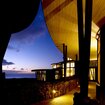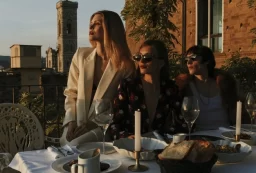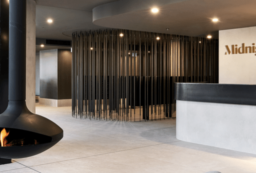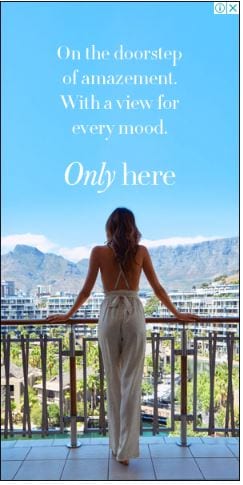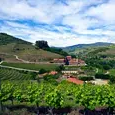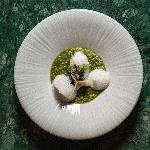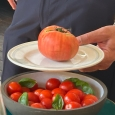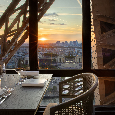
Architects were the latest shiny new profession in the 1840s. Designing Westbourne Terrace, in semi-rural West London, gave them the chance to show off their skills. And they weren’t going to let the Westbourne River limit their aspirations. The tributary of the Thames, now one of London’s “lost rivers”, was diverted underground. In 1842, a white stucco row of elegant wedding-cake townhouses arose. Today, three of those houses make up the classically elegant Roseate House London.
Westbourne Terrace, with its Doric columns and balustraded balconies, was built for Victorians on a godly mission to spread British culture and decorum across the empire. Ironically, Indian-based Roseate hotels are now returning the traditions of afternoon tea, classic cocktails, fine dining, impeccable service and immaculate decor to London.

The Victorians, intent on building a global empire more glorious than ancient Athens and Rome, planted rows of maple-leafed London plane trees. Now, 180 years on, those mature trees have created a surprisingly peaceful green oasis just five minutes’ walk from Paddington station.
Roseate House London commissioned antique expert Jonty Hearnden to select art that recreated the civilised splendour of a bygone age. Line drawings of the great country houses recall Victorian times. Watercolours of regimental dress, sometimes turbaned, remember an empire on which the sun never set. Each of the 48 rooms of this stylish boutique hotel has its own unique art: still-life oils and formal portraits make every room a private art gallery.

Suites feature a restful lounge of paisley patterned sofa, a comfortable chair and a mahogany table for the Krupps coffee-machine, kettle and a selection of premium London teas.

Pride of place in the bedroom goes to a hand-crafted four-poster Bellestrata bed. its silk ceiling culminating in cream rose: a firm, wide mattress dressed in top quality Irish linen and traditional blankets. A headboard is decorated with the delicate summer flowers that a Victorian lady might press as her genteel pastime. Pull down the blinds and draw curtains, heftier than a tea clipper’s main-sail, for an hour after hour of delicious restorative sleep.
"In 1842, a white stucco row of elegant wedding-cake townhouses arose. Today, three of those houses make up the classically elegant Roseate House London."
Although there is an air of Victoriana to the bathroom with a Sanitan wash down closet and Lefroy Brooks gleaming plumbing, so sturdy that it could power a steam-ship, the bathroom is brightly contemporary. Even the Duke of Marlborough’s heady eau de toilette – created from lemon, pine and black pepper – has been updated by Penhaligon into its range of Blenheim Bouquet toiletries.


The Hyde Bar and Restaurant is one of London’s best-stocked bars. They even keep some vintage bottles of whisky in the safe. Pride of place goes to an Old Mock, from Kentucky, distilled in 1916 but not bottled, 18 summers later as the label proudly proclaims, until 1933. By then prohibition was in operation and the label bore the words, “Strictly for medicinal purposes.” Patients paid their doctors for a prescription. Today, you’ll need deep pockets for a glass of that vintage whisky with a magnificent nose that simply screams “Bourbon!”
A 72-page book, The Story of Whisky, provides education, a global tour and a list of the bar’s 130 whiskies. Select a dram from Scotland, Japan, India, USA or beyond. Perhaps try a Campbelltown with its aura of sea mist, described as “the deepest voice in the choir.”

It’s astounding how just three ingredients can supply such a spectrum of tastes – light, fresh, heavy, rich, fruity, floral, iodine, spicy and smoky. Amazing that whisky tasters forge careers out of defining the nose, the palate, the burn and the finish merely from the distillation of barley, water and yeast.

The Hyde’s cocktail maestro will gladly shake-you up a Soyer au Champagne, including ice-cream, from 1888 or a Vowel from 1927 where the Kilkeran 12-year-old whisky may make your elocution more fluent. Or not as the case, maybe.
"Westbourne Terrace, with its Doric columns and balustraded balconies, was built for Victorians on a godly mission to spread British culture and decorum across the empire. Ironically, Indian-based Roseate hotels are now returning the traditions of afternoon tea, classic cocktails, fine dining, impeccable service and immaculate decor to London."
Rajesh Maharjan, the Executive Chef, has designed an all-day menu for the particular demands of London in 2020. After experience in Delhi and Dubai, he brings innovative tastes to London. A cucumber and fennel salad is an excitingly succulent accompaniment to the crab cake starter, though there’s also a pleasantly rich avocado and mango relish.

With London offices closed, some people take up the “Work from Roseate” offer, maybe because it includes lunch and an end of day cocktail. So the kitchen is on standby throughout the day. Between conference calls, a guest may fancy the east-meets-west King Prawn Tagliatelle or a Vegan Burger, based on jack-fruit, which takes vegan cuisine to another level.
Although an honesty bar in reception, sadly no longer in operation, suggests that Roseate House London is a tribute to the age of Disraeli, Gladstone and handsome cabs, the hotel is subtly modern. A smooth jazz-funk soundtrack plays in the bar and avant-garde orbs of light hang down. The best of the Victorian Age coalescing with contemporary style is an irresistible combination.

